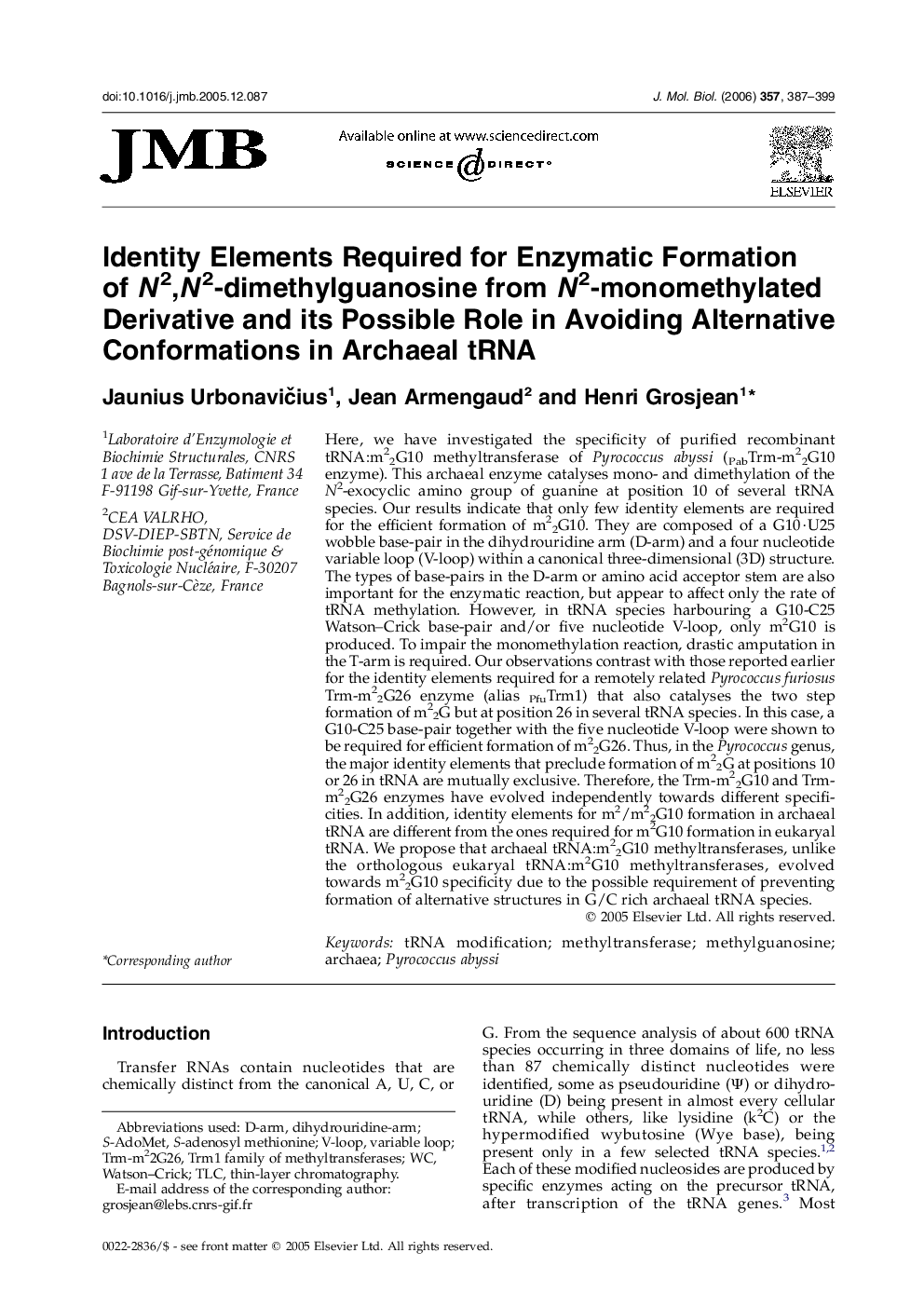| کد مقاله | کد نشریه | سال انتشار | مقاله انگلیسی | نسخه تمام متن |
|---|---|---|---|---|
| 2189824 | 1096224 | 2006 | 13 صفحه PDF | دانلود رایگان |

Here, we have investigated the specificity of purified recombinant tRNA:m22G10 methyltransferase of Pyrococcus abyssi (PabTrm-m22G10 enzyme). This archaeal enzyme catalyses mono- and dimethylation of the N2-exocyclic amino group of guanine at position 10 of several tRNA species. Our results indicate that only few identity elements are required for the efficient formation of m22G10. They are composed of a G10·U25 wobble base-pair in the dihydrouridine arm (D-arm) and a four nucleotide variable loop (V-loop) within a canonical three-dimensional (3D) structure. The types of base-pairs in the D-arm or amino acid acceptor stem are also important for the enzymatic reaction, but appear to affect only the rate of tRNA methylation. However, in tRNA species harbouring a G10-C25 Watson–Crick base-pair and/or five nucleotide V-loop, only m2G10 is produced. To impair the monomethylation reaction, drastic amputation in the T-arm is required. Our observations contrast with those reported earlier for the identity elements required for a remotely related Pyrococcus furiosus Trm-m22G26 enzyme (alias PfuTrm1) that also catalyses the two step formation of m22G but at position 26 in several tRNA species. In this case, a G10-C25 base-pair together with the five nucleotide V-loop were shown to be required for efficient formation of m22G26. Thus, in the Pyrococcus genus, the major identity elements that preclude formation of m22G at positions 10 or 26 in tRNA are mutually exclusive. Therefore, the Trm-m22G10 and Trm-m22G26 enzymes have evolved independently towards different specificities. In addition, identity elements for m2/m22G10 formation in archaeal tRNA are different from the ones required for m2G10 formation in eukaryal tRNA. We propose that archaeal tRNA:m22G10 methyltransferases, unlike the orthologous eukaryal tRNA:m2G10 methyltransferases, evolved towards m22G10 specificity due to the possible requirement of preventing formation of alternative structures in G/C rich archaeal tRNA species.
Journal: Journal of Molecular Biology - Volume 357, Issue 2, 24 March 2006, Pages 387–399